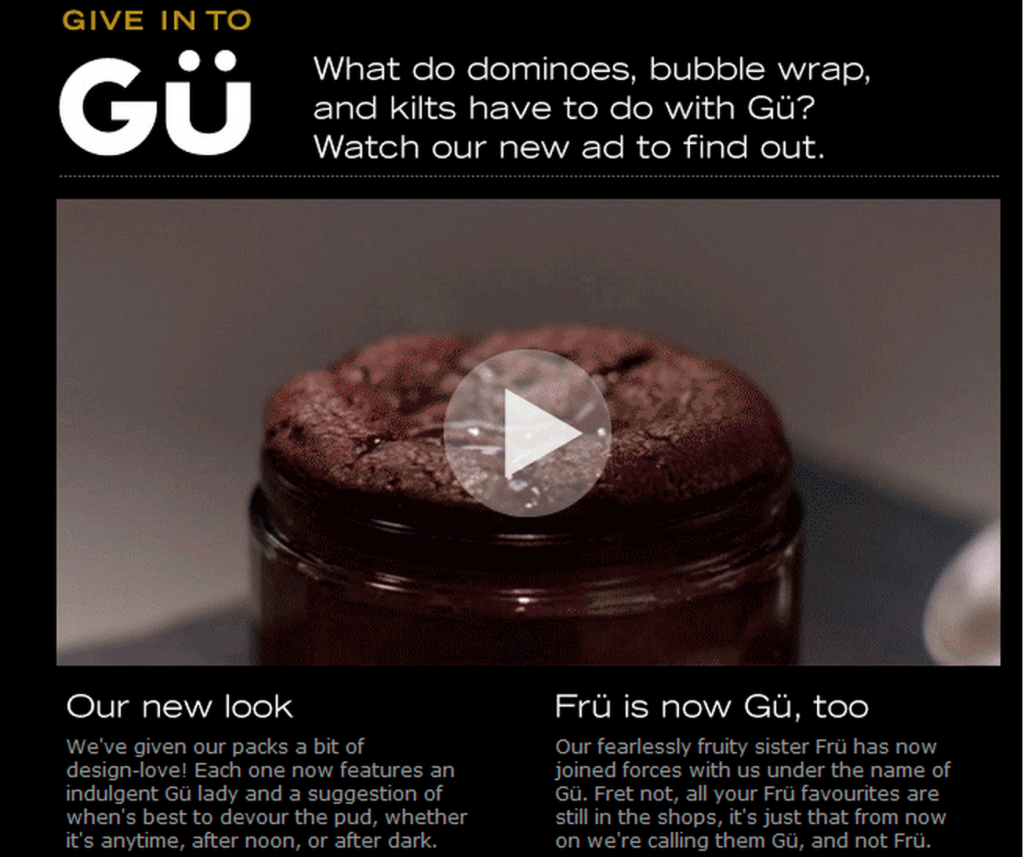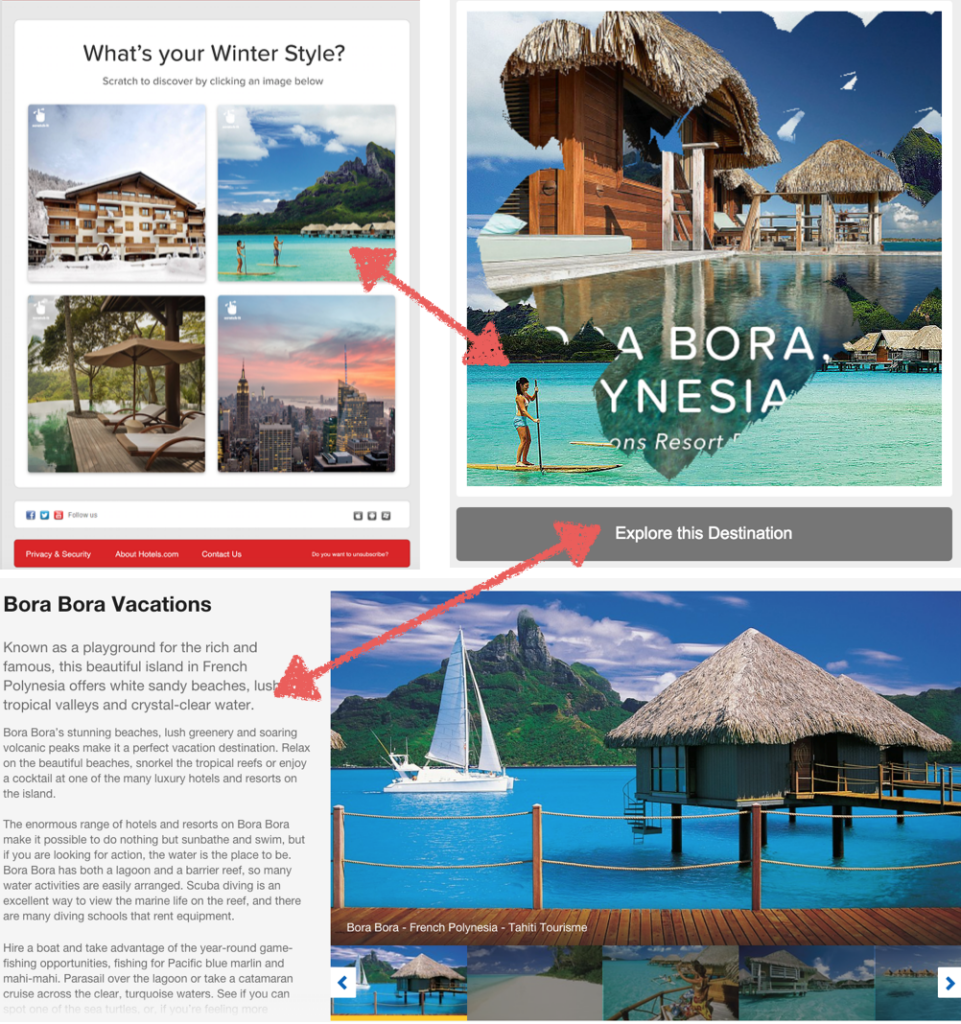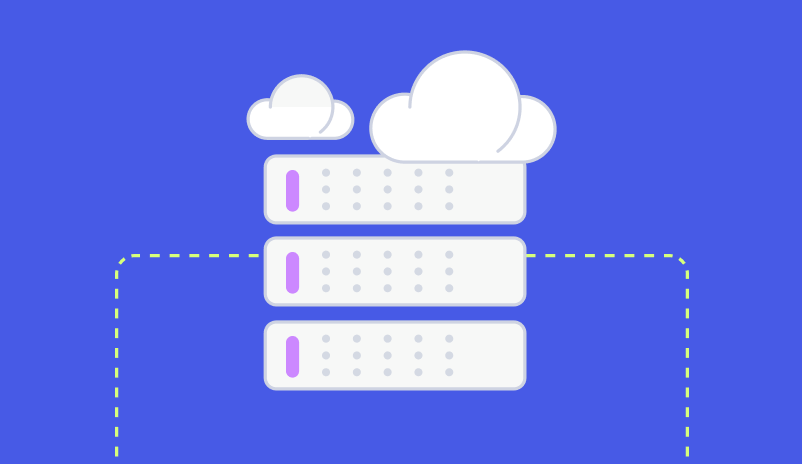Choose A Narrative: 3 Storytelling Methods For Email Marketing (With Examples)
Learn how to use three storytelling methods to increase email engagement.
Today, the only messages email recipients will read and listen to are the messages they choose to read and listen to. We are marketing to an opt-in culture.
The key to positive attention in this type of environment is riveting content. This content must appeal to the recipients emotions. The best way to build an emotional connection between customer and brand is through mastering the art of telling stories.
To effectively story-tell brands need to complete two objectives: share stories that people want to listen to, and tell stories that engage audiences with the brand. By keeping the stories personable, relevant, and engaging, the last thing on your recipients minds will be to opt-out.
To begin, let’s take a look at an email that does not tell a story:
I receive emails like this all the time.

They take advantage of their list to make quick sales. Most of their recipients will immediately perceive this as spam. Other’s won’t open it, and some will buy. Every purchase by the latter encourages us as email marketers to send similar offers. After all, the company is making money right?
Short term – yes. However, over time they burn out their list. This is not a sustainable approach. In fact, constant quick-fire sales emails have been said to be detrimental to how the recipient feels about the company. This is a MAJOR problem because our choice to buy as a consumer is largely based on our emotions – we only use the facts offered (sales, warranties, guarantees, etc) to justify this purchase.
The long term success of email marketing is rooted in telling stories. Email is a great channel to begin a story, even if the story is not completed within the email itself. Below are three different storytelling models that you can use within your email marketing as well as insights on why they work.
1. Linear Storytelling “The Traditional Model”
Linear storytelling is a method that starts at Point A and follows a logical progression of chronological events guiding the characters to Point B. The audience cannot alter the course of events.
This is the most common storytelling approach for e-commerce email. Since the audience cannot influence the story, the storyteller is in full control of the outcome.
The narrative follows a chronological order that readers can easily identify with. The story must keep listeners excited through relevant and relatable situations and characters.

Why This Email Works:
It stirs emotions.
It evokes memories of the friends they ate with, the days, the places they cooked, and therefore transcends the copy from written content to points in time that the recipient can feel.
It is personal.
Recipients can easily identify with the storyline as the protagonist is themselves. The Blue Apron copy clearly identifies the personal accomplishment of the recipient through numerical values; the amount of ingredients the recipients use, the time shared, and the techniques learned. It is a personalized story, told from this company’s distinctive vantage point.
It’s simple.
The attention span of the average human being is 8 short seconds. The underlying story Blue Apron lays out is chronological, logical and to the point. They took the complexity of showcasing a full year of cooking into a few simple lines through focusing on a simple point A to B layout.
It’s shareable.
Stories are meant to be shared. Humans are social creatures. If we see a message from a brand it holds far less value than a message about that brand from a friend of ours using them. Connect with your customers, and they will connect you with their friends. The Blue Apron email clearly calls on the viewer to share their year in review via social networks, and because of it’s relevant, personal, simple, and positive story, they very well might.
2. Linear Interactive
Similar to Linear storytelling, linear interactive unfolds with a single beginning and end. The striking difference, of course, is that now the audience controls whether they will interact with certain parts of the story. They do not have to interact at a deeper level if they do not want to, and therefore if they choose to interact it is perceived differently. If they choose to interact their brain credits the discovery to themselves, and this reward is powerful.
In email, you can add interactive content by linking images or text to interactive landing pages and sites. While the interaction may not take place directly in the email, the email can set the stage for beginning the recipient towards an interaction. If the user chooses not to interact, your story is still there but may not be completed. If the user chooses to interact you are able to label this recipient as an engaged lead.
If you are looking for interactive content that is the easiest-to-implement and performs really well, check out reveal marketing. Reveal marketing requires the recipient of a message to interact in order to uncover the full message. Remember what I said earlier about people wanting to be part of discovery? It does just that, not to mention, triggers strong psychological triggers, like curiosity and FOMO that drive readers to act.

Why This Email Works:
It’s Engaging.
For recipients, interactive content allows them to customize their path through the content. By offering navigation, the content becomes far more enticing. The video media in the GU email stimulates the recipient keeping them interested and attentive.
It’s Emotional.
Many forms of interactive media call for the user to perform an action to finish the story. This appeals to the recipients desire to reveal the ending.
It’s Novel.
Because interactive media accompanying email is the minority it quickly captures the attention of most recipients.
It Takes the Story Deeper.
Email is a great starting point for any story. However, keeping recipients idle reading your story for a lengthy period of time is difficult. Using interactive components such as video can take your story to the next level. In this example if they choose to watch the video, they are introduced to new stimulations such as sound and may end up spending a longer period of time with your brand.
3. Multiple Option Interactive
In a multiple ending narrative, the audience can decide on the outcome of a story. To build a multiple ending narrative, you need to give your recipients different options with different endings. If you choose to go with a multiple ending narrative – make sure that every possible ending is compelling.

Why This Email Works
It’s Discovery Based.
If the user chooses to interact, it is on their own terms. They feel they made the choice, and therefore feel more attached to the storyline as an effect of their decision.
It Speaks to their Preferences.
While the story has again been scripted ahead of time, the user may choose to only embark on one aspect of the story, the story they chose. This not only gives the user a choice but also gives the storyteller the data from those interactions and therefore more insight into that particular recipient’s preferences. This data can be used for personalized segmentation in the future.
It’s Interactive.
If I don’t touch it, nothing will happen. My touch is what matters. This means I have control over the story and am conversing with the brand instead of merely being talked at.
It’s compelling.
In this story, I am not so sure what will happen next. This mystery incites a curiosity to interact and find out.
Final Note:
The longevity of your brand depends on the bond you create with your customers. Emails can be an extension or the starting point of any brand story.
Grow your business and total sales




